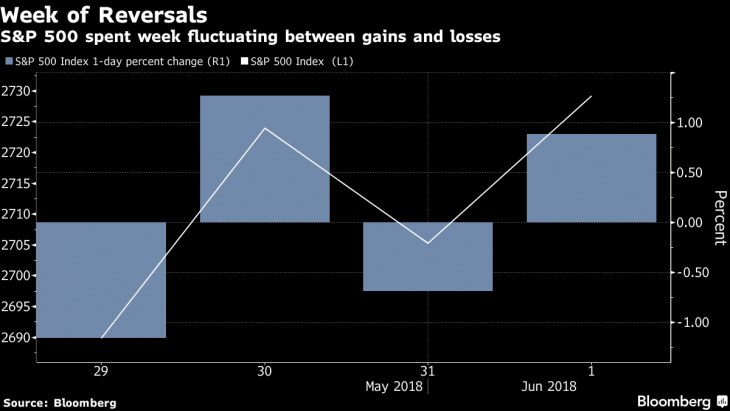Bloomberg.com — Trade tensions between the U.S. and China are unlikely to be resolved by the existing architecture that governs world trade, according to Stephen Olson, Hong Kong-based Research Fellow at the Hinrich Foundation Ltd.
The world’s two biggest economies need to agree on a new framework that will allow both of their economic systems to co-exist, something the World Trade Organization doesn’t have the capacity to resolve, said Olson, who was a former U.S. government trade negotiator.
The following are edited excerpts of an interview with Bloomberg Television’s Rishaad Salamat:
Are we in a trade war?
“As of today, we are not in a trade war, but I think the danger is certainly escalating.
The application of the steel and aluminum tariffs to the European Union and Canada and Mexico is certainly a very significant escalation and we are certain that those trading partners will retaliate. At that point, the question becomes will the U.S. administration retaliate against that retaliation.”
What kind of scenarios are you expecting?
“I would have to say that the current administration is arguably the most unpredictable administration in modern American history, so anyone who makes prognostications does so at their own risk. I would, however, point to a couple of scenarios. There is some speculation that at the end of the day this might actually be a negotiating tactic and in fact Secretary Ross made the comment to the effect that the reason the tariffs had to go into effect on Canada and Mexico was because there was insufficient progress in renegotiating NAFTA. So it remains to be seen, but that may actually be the end game here.”
Should trade balances be viewed as a score card?
“This is one of the most concerning aspects of Secretary Ross’s weekend visit to Beijing. The primary objective seemed to be to somehow negotiate down the size of the U.S. trade deficit with China. Doing so, unless the U.S. addresses its imbalance between savings and investment, will in all probability simply transfer that trade deficit from China to other countries and it would also get us dangerously close to the territory of managed trade. Trade negotiations should be about removing restrictions to cross-border access, it should not be about arbitrarily divvying up slices of market share.”
Can trade be viewed in a binary way?
“As the size and sophistication of China’s economy grows, its state directed model of capitalism is increasingly coming into conflict with the traditional Western model of free markets, free trade and a hands-off government approach to the market place, and what we are seeing now is that the rules of global trade are not really capable to help these two competing economic systems to get along.”
What kind of model is needed?
“Given the experience we had with the Doha round, I am not terribly optimistic that this is something that can be addressed within the context of the WTO. It might be more realistic for the U.S. and China to try to work out some kind of a modus operandi, some kind of framework that would let these two countries to continue their trade and investment partnership, because after all this has been a trade and investment relationship that has been very mutually beneficial. Now is the time really for the U.S. and China to figure out how can these two systems co-exist with each other, because it is clear both are here to stay.”
Would it be better to let sleeping dogs lie?
“Because of the size of China’s economy and its growing technological sophistication, I think these friction points are just going to increase in frequency, so I don’t think we can let sleeping dogs lie, this is an issue that has to be addressed.”
